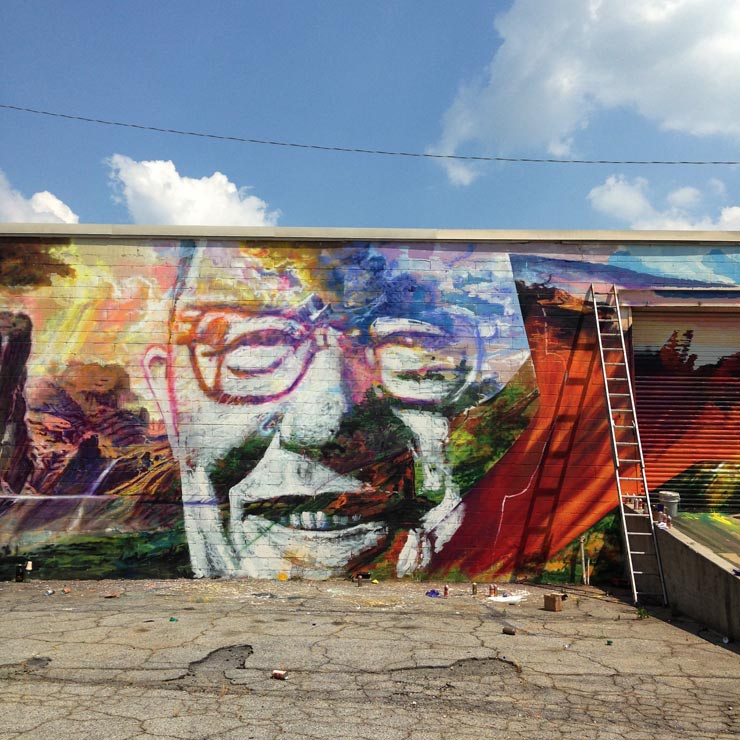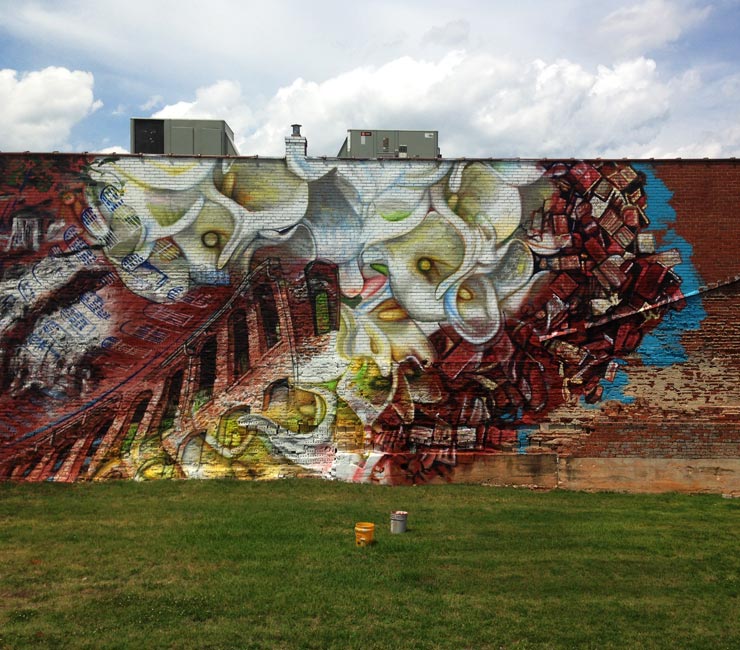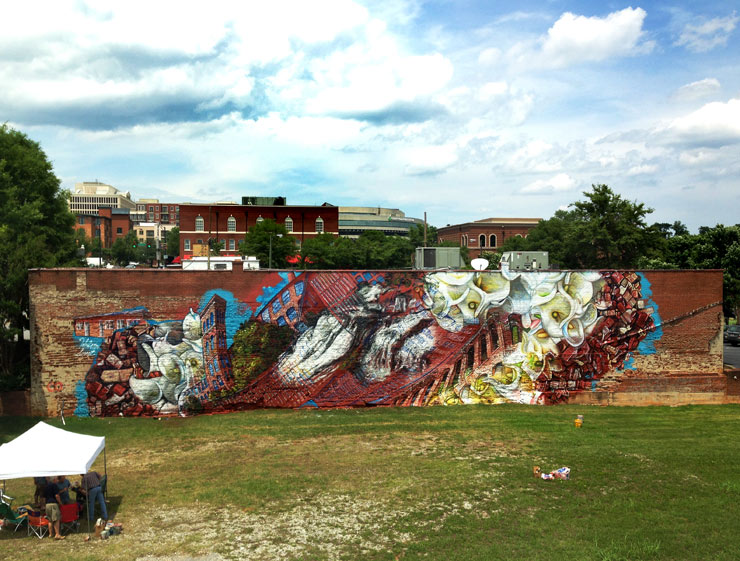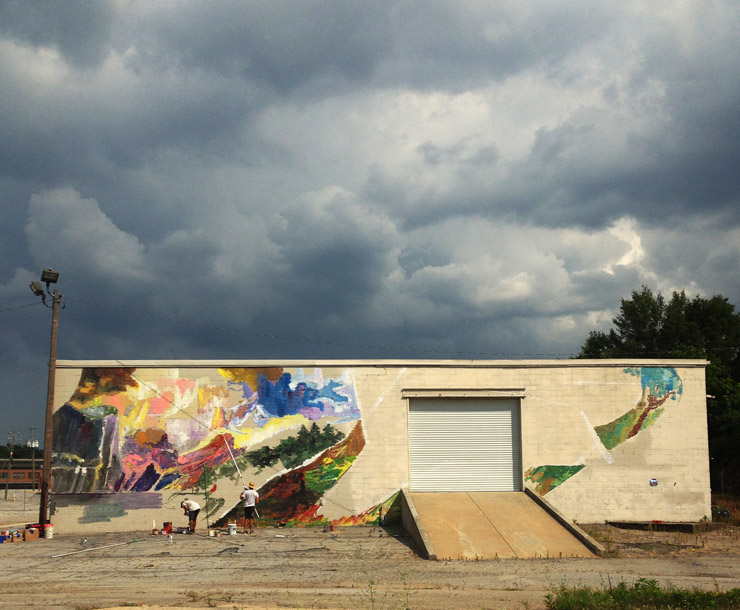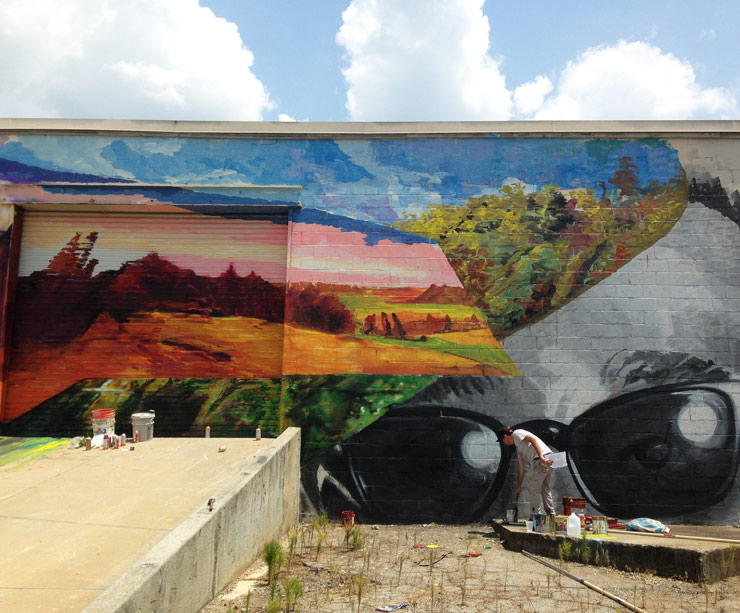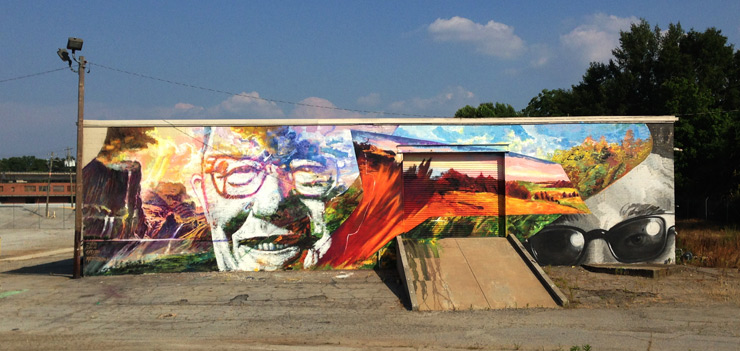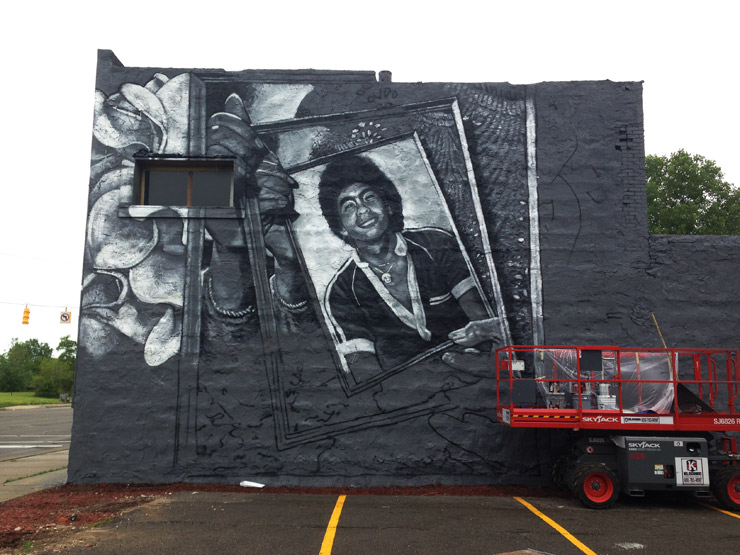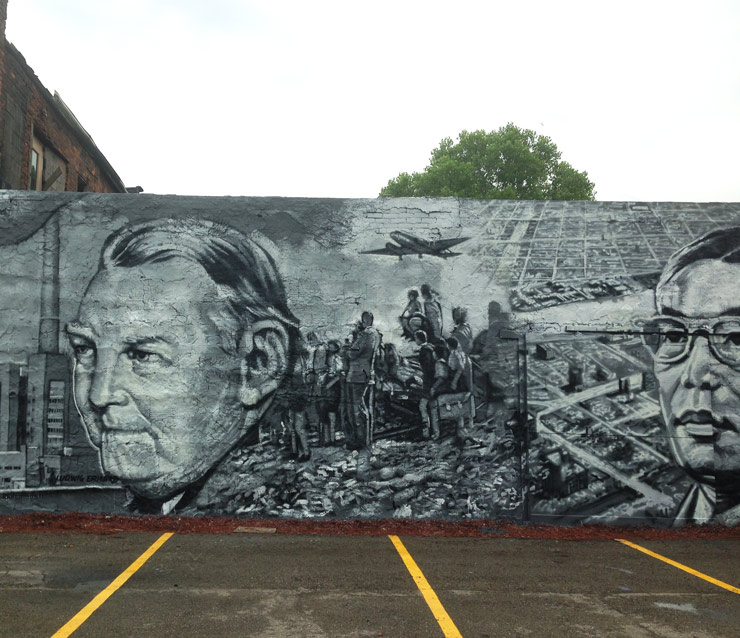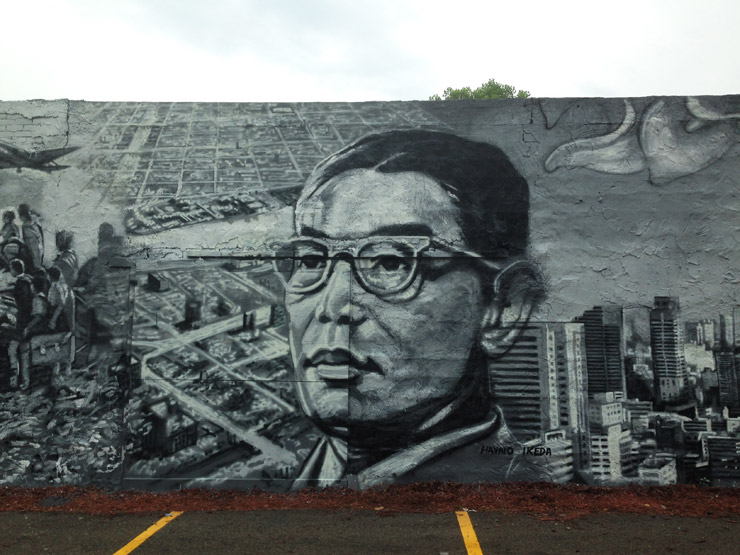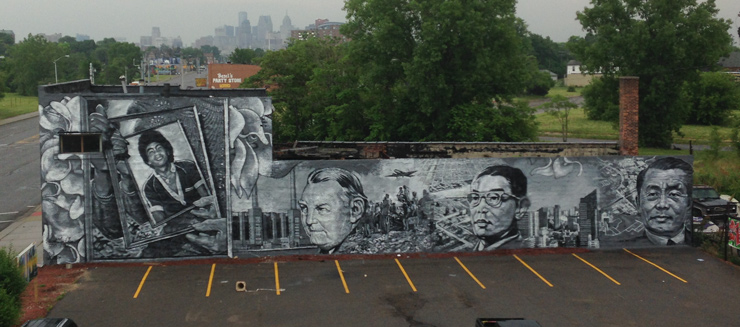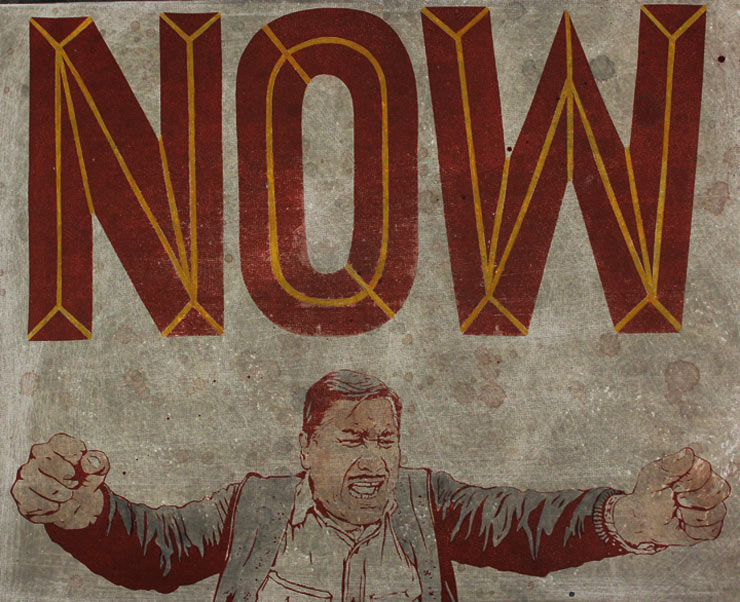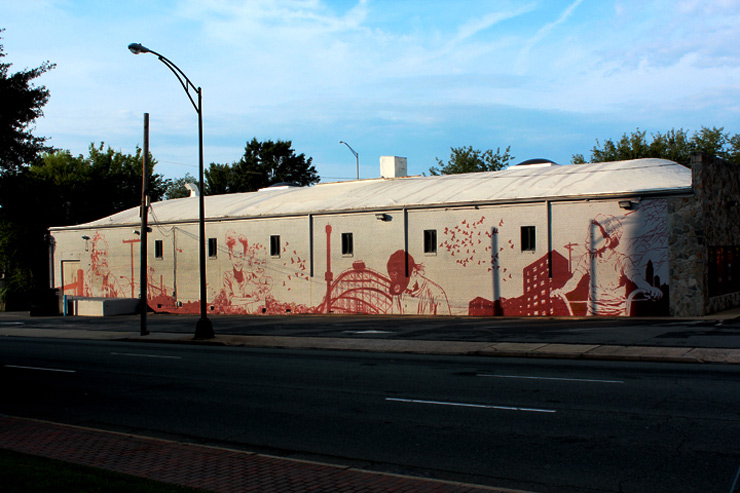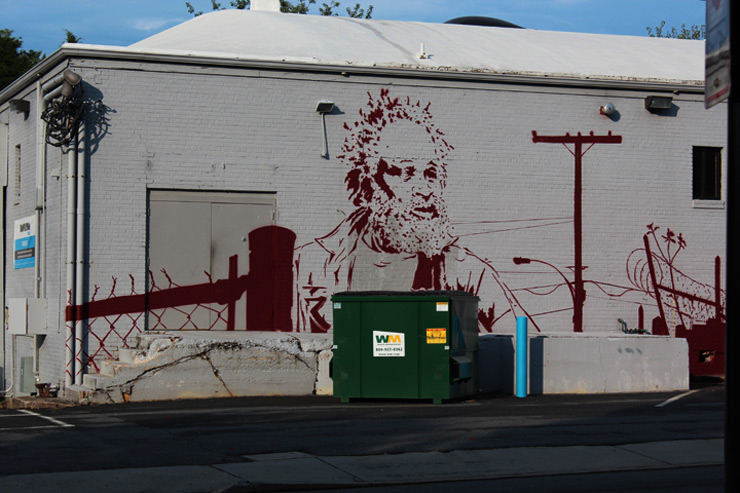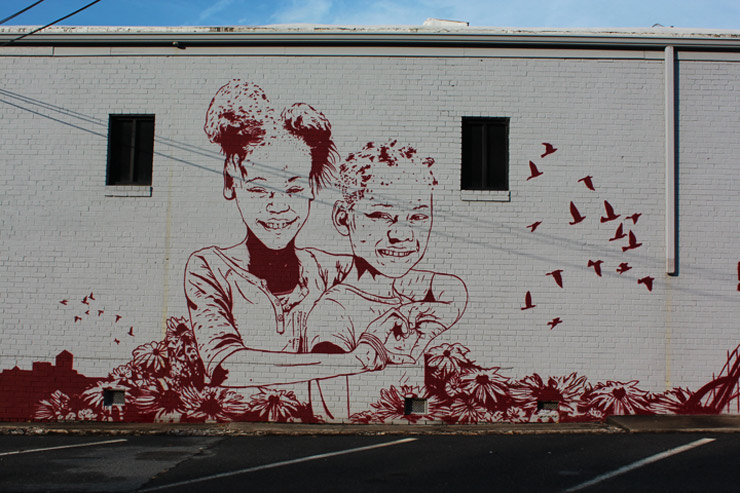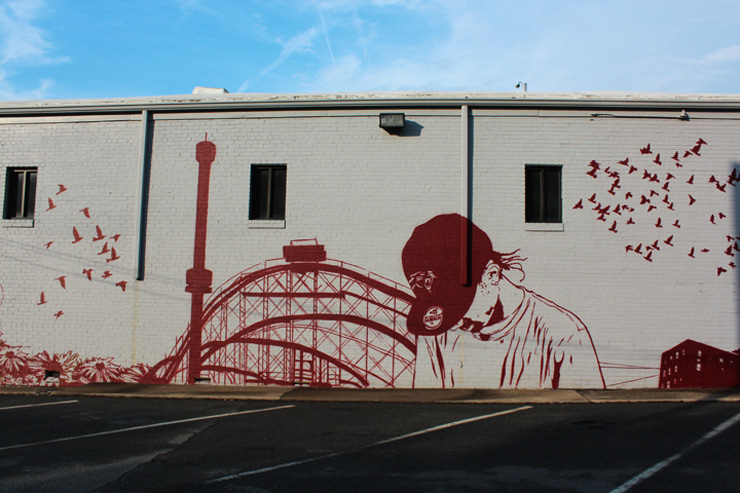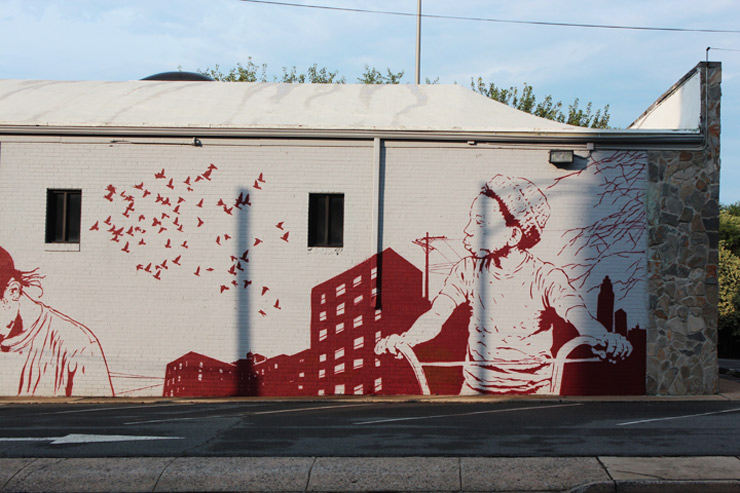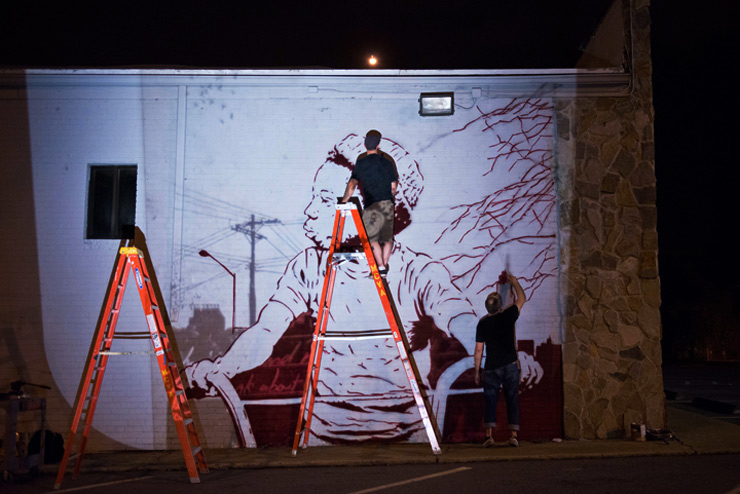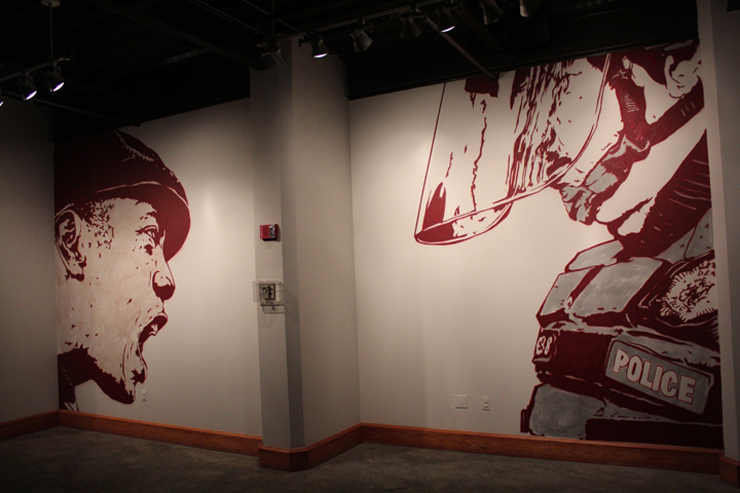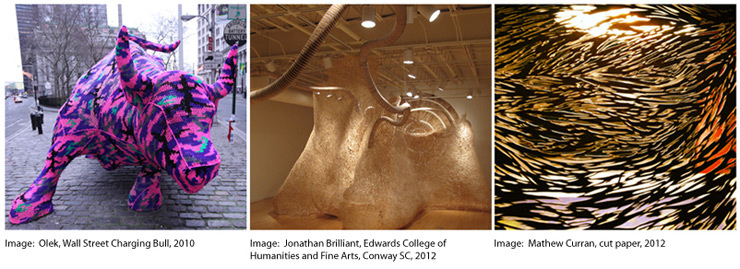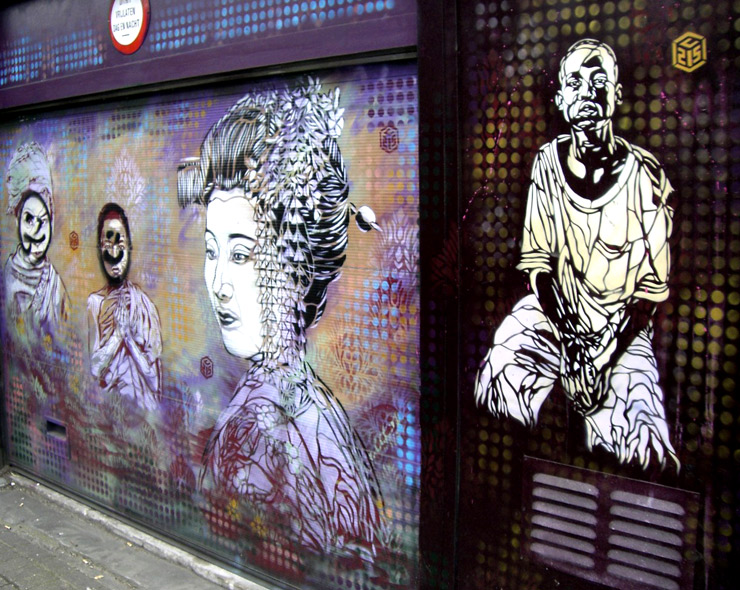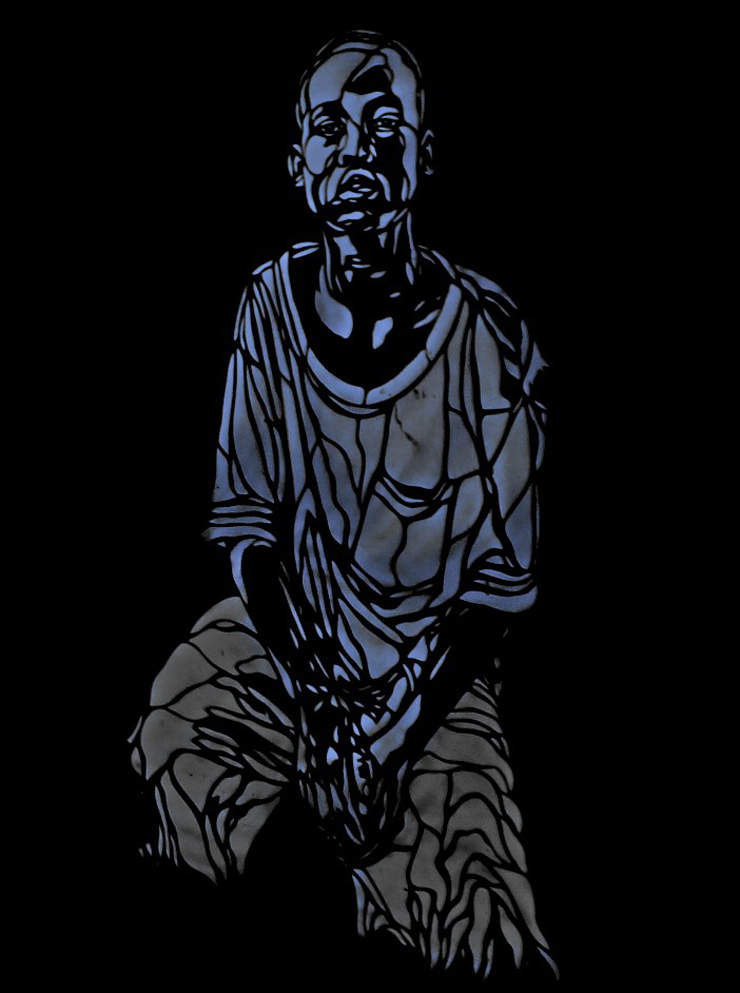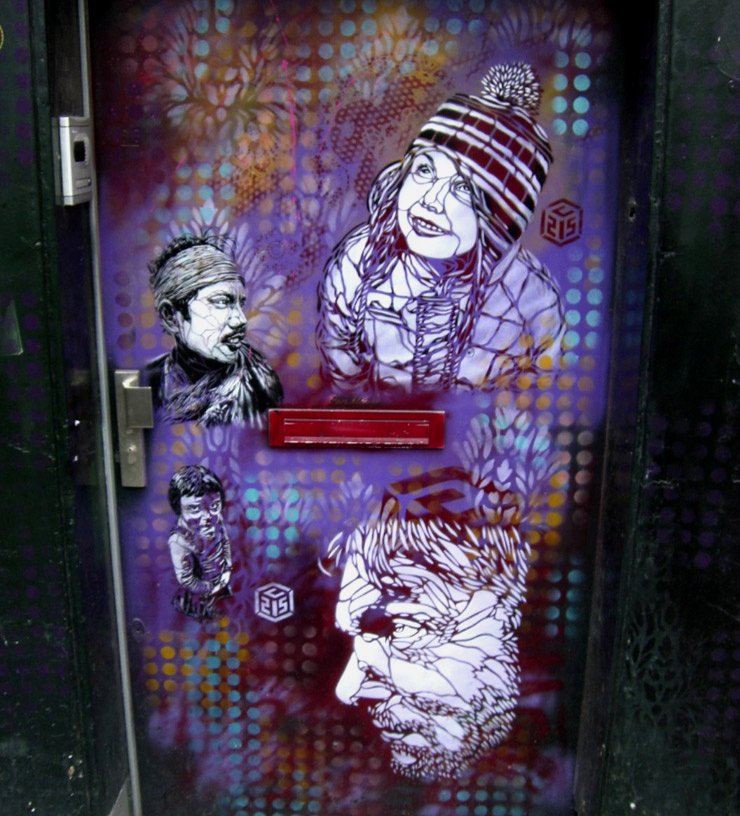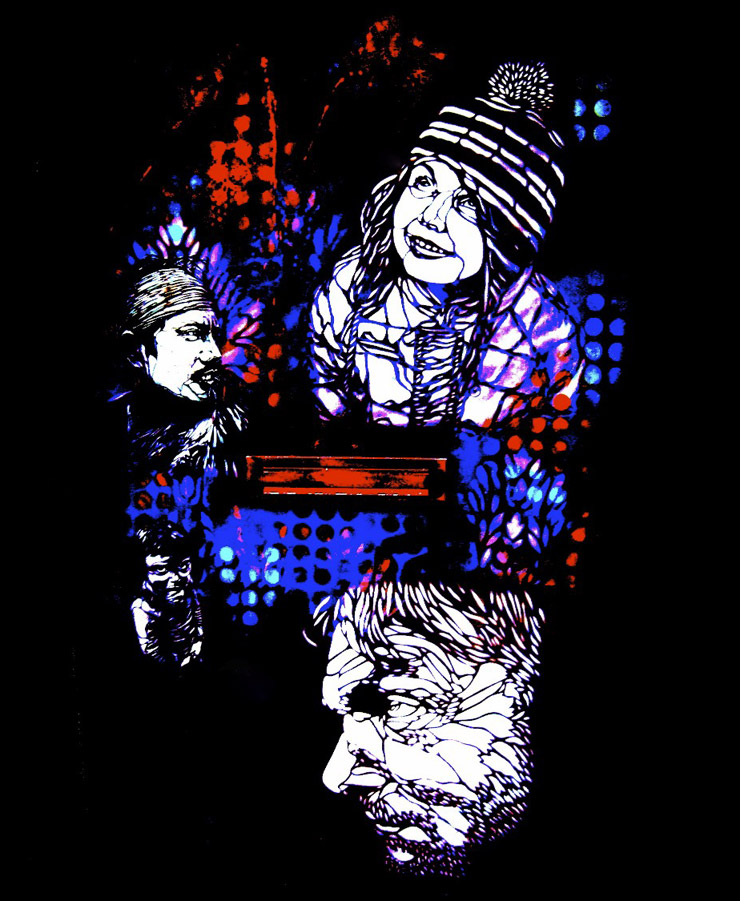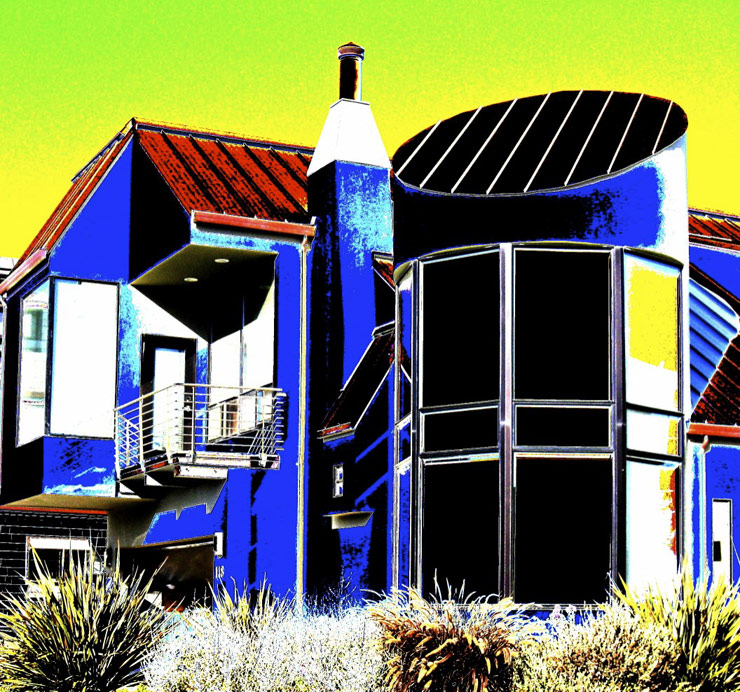The traveling Street Artist and historian / student / observer / critic of urban planning, anthropology, people’s movements who goes by the moniker GAIA shares with us today some of the back stories for recent murals he has authored.
When he posts on his Facebook page that he is looking for recommendations for reading about a certain city or culture where he will be soon visiting, you can have a degree of certainty that GAIA will soon be depicting what he learns with portraiture and dioramic imagery that illustrates what he has found. This fascination for self-education and public education through public artworks has roots in mural history that has persisted for decades in cities and neighborhoods around the world.
Gaia “City of Altruism”. Detail. Greenville, NC. June, 2014. (photo © Gaia)
Typically public murals are stories told from a formal city or town historical perspective or come about from the distilled sentiment of a community to address or commemorate pivotal people and events that formed and molded the direction or DNA of a population. With Gaia’s personal study, criterion for selection, and style of storytelling one wonders if there is not a GAIA school of mural making that has been evolving over these last five years – one that already appears to have adherents and enthusiastic co-creators – and which reflects his focus on social movements, political machinations, industry, economic drivers, and anthropology.
Here are recent examples of work by Gaia and collaborators in three American cities (although his work is not limited to just this continent) along with some explanatory text from the artist to help contextualize the stories and players evoked within them.
“City of Altruism” – Greenville, North Carolina
Part of #yearofaltruism, the mural features the warped images of four mills that have been repurposed or are slated for renovation and that flow through the Reedy River falls. Previously sites of industry and working class employment that are now used for shopping, upper-income lofts, and entertainment culture, these mills are part of a local heritage that GAIA wanted to preserve.
“Global competition restructures the lives of working class and white collar communities as the South meets the 21st century,” he explains as he describes the new piece. “The calla lilies are a nod to the Bible-minded nature of Greenville; the flowers represent purity yet are also poisonous. These are paired with the tumbling red brick of change and destruction. A single story brick duplex emerges out of the top left of the composition with the phrases “Webster Street” and “Phillis Wheatley” as a memorial to the African American neighborhood that has been erased from this area.”
Gaia would like to thank The Year Of Altruism Foundation for including him in their programming and for inviting him to Greenville, with special thanks to Steve Cohen and Don Kliburg for orchestrating the project.Gaia “City of Altruism” Greenville, NC. June, 2014. (photo © Gaia)
“Boundary” – Atlanta, Georgia
GAIA in collaboration with artists Nanook, Ozmo and Matt Cogdil created these three warped Bierstadt paintings that fade into images of Mayor Hartsfield and of H. Rap Brown in the bottom corner. The project was completed for Living Walls, the City Speaks in the city’s West End, which GAIA describes as “an industrial neighborhood that is used as a buffer with the construction of Interstate 20 to prevent Mechanicsville and Pittsburgh from encroaching further north into the downtown and the Mosley Park areas.”
Gaia, Nanook, Ozmo and Matt Cogdil collaboration. “Boundary”. Process shot. Atlanta, Georgia. Living Walls Atlanta 2014 (photo © Gaia)
Gaia, Nanook, Ozmo and Matt Cogdil collaboration. “Boundary”. Detail. Atlanta, Georgia. Living Walls Atlanta 2014 (photo © Gaia)
Gaia, Nanook, Ozmo and Matt Cogdil collaboration. “Boundary”. Detail. Atlanta, Georgia. Living Walls Atlanta 2014 (photo © Gaia)
Gaia, Nanook, Ozmo and Matt Cogdil collaboration. “Boundary”. Atlanta, Georgia. Living Walls Atlanta 2014 (photo © Gaia)
The Murder of Vincent Chin in Detroit, Michigan
The primary focus of the elongated piece is a memorial to #VincentChin who, observes GAIA, “passed in 1982 in an altercation that possessed attributes of a hate crime and whose perpetrators who were given lenient sentencing in a plea bargain.”
With that image as the central one, GAIA combines images of leaders whose careers directly or indirectly could be tied to that event, he says. He describes the mural like this: “Painting post war economic miracles as a portrait of global competition that led to layoffs in Detroit and fueled the frustration and xenophobia behind Vincent Chin’s murder”.
Gaia. Memorial to Vincent Chin. Process shot. Detroit. June, 2014. (photo © Gaia)
Gaia. Memorial to Vincent Chin. Process shot. Detroit. June, 2014. (photo © Gaia)
Here are the other players in the mural, as described by GAIA;
“Wirtschaftswunder” Ludwig Erhard was a German politician notable for his role in Germany’s robust post war recovery.
Gaia. Memorial to Vincent Chin. Process shot. Detroit. June, 2014. (photo © Gaia)
Sun Yun-suan (Chinese: 孫運璿; pinyin: Sūn Yùnxuán; November 11, 1913 – February 15, 2006) was a Chinese engineer and politician. As minister of economic affairs from 1969 to 1978 and Premier of the Republic of China from 1978 to 1984, he was credited for overseeing the transformation of Taiwan from being a mainly agricultural economy to an export powerhouse.
Hayato Ikeda (池田 勇人 Ikeda Hayato?, 3 December 1899 – 13 August 1965) was a Japanese politician and the 58th, 59th and 60th Prime Minister of Japan from 19 July 1960 to 9 November 1964. Takafusa Nakamura, a leading economic historian, described Ikeda as “the single most important figure in Japan’s rapid growth. He should long be remembered as the man who pulled together a national consensus for economic growth.”
Gaia. Memorial to Vincent Chin. Detroit. June, 2014. (photo © Gaia)
<<>>><><<>BSA<<>>><<<>><><BSA<<>>><><<>BSA<<>>><<<>><><BSA
Please note: All content including images and text are © BrooklynStreetArt.com, unless otherwise noted. We like sharing BSA content for non-commercial purposes as long as you credit the photographer(s) and BSA, include a link to the original article URL and do not remove the photographer’s name from the .jpg file. Otherwise, please refrain from re-posting. Thanks!
<<>>><><<>BSA<<>>><<<>><><BSA<<>>><><<>BSA<<>>><<<>><><BSA
 BROOKLYN STREET ART LOVES YOU MORE EVERY DAY
BROOKLYN STREET ART LOVES YOU MORE EVERY DAY